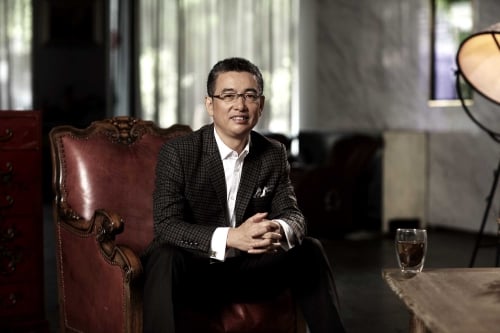

Artificial intelligence will be more deeply integrated into the insurance industry and will further spur innovation and transformation of the insurance model, particularly motor insurance, according to an official of Ping An Property & Casualty Insurance Company.
Zhu You Gang (pictured), senior vice president of Ping An Property & Casualty Insurance, said that as computing power and AI algorithms become more advanced, the technology will become even more embedded in the industry.
“Insurance companies will have the ability to better understand customers and risks,” Zhu told Insurance Business. “Technologies will drive the industry transformation and upgrading, which will reconstruct existing insurance business processes, as well as optimise and innovate products to provide a better service experience.”
Zhu shared some of the recent applications of the technology, especially in the field of motor insurance, through what the company dubbed as the “smart motor insurance claims” system.
The system allows motorists to conduct self-assessment of external vehicular damage using an application on their smartphone, speeding up the insurance process for minor vehicular accidents.
According to Zhu, Ping An combined the image recognition technology with the risk leakage rules in the industry, utilising big data and AI to solve industry pain points such as complicated loss assessment processes and difficulty in identifying hidden risk leakage. This, he said, leads to high-precision recognition of pictures, loss assessment, and pricing within seconds, effectively reducing claims costs and improving efficiency and the client experience.
Zhu claimed that Ping An Property & Casualty was the first insurer in China to create a credit-based motor insurance claims system in 2019, which gave safe driving scores to auto owners by leveraging big data and providing each auto owner with corresponding trust-based quotas for self-help claims settlement.
According to Zhu, the trust-based claims settlement consists of four steps: first is entering the repair amount, followed by confirming the accident information, uploading the photos, and finally, entering the payment information to complete the claim settlement and receive the payment amount.
“The entire process only takes around three minutes,” he said. “From the point of view of the insurance company, compared with the previous process, steps such as investigation, loss assessment, review, document collection, loss adjustment and payment were removed, significantly improving efficiency.”
The company utilised AI-based automatic modelling to build white list portraits for customers on the basis of driving and claims data. Ping An’s in-house AI Smart Quick Claim system combines image-based loss assessment, optical character recognition, and facial recognition technologies, Zhu said.
The changing face of motor insurance
With the development of technologies such as semi-autonomous and autonomous driving, Zhu predicted that the motor insurance loss ratio will drop sharply, and risks will be concentrated in algorithm programs, hardware equipment and other aspects.
“Accordingly, the motor insurance liabilities will shift from individual consumers to automakers, and the insurance model will also change and will be most likely different from the current model based on the annual premium,” he said. “In response to the changes brought about by self-driving vehicles to insurance, we have cooperated with top companies in the field of autonomous driving to study the claim payment for vehicles with autonomous driving technologies at different stages, as well as the technology’s impacts on insurance.”
These efforts, Zhu said, stem from a strategic transformation initiative launched by Ping An in 2018, which revolved around “data-driven operations with an ecosystem based on connectivity to build a customer-centric new model of smart insurance.”
The initiative has resulted in various innovative applications, not just in motor insurance, but also in property insurance, agricultural insurance, and liability insurance.
These technologies, according to Zhu, will change how insurance deals with risks.
“Insurance models will be more diversified and will evolve into the ‘ex-ante prediction-based model’ from the ‘ex-post follow-up model’,” he said.
